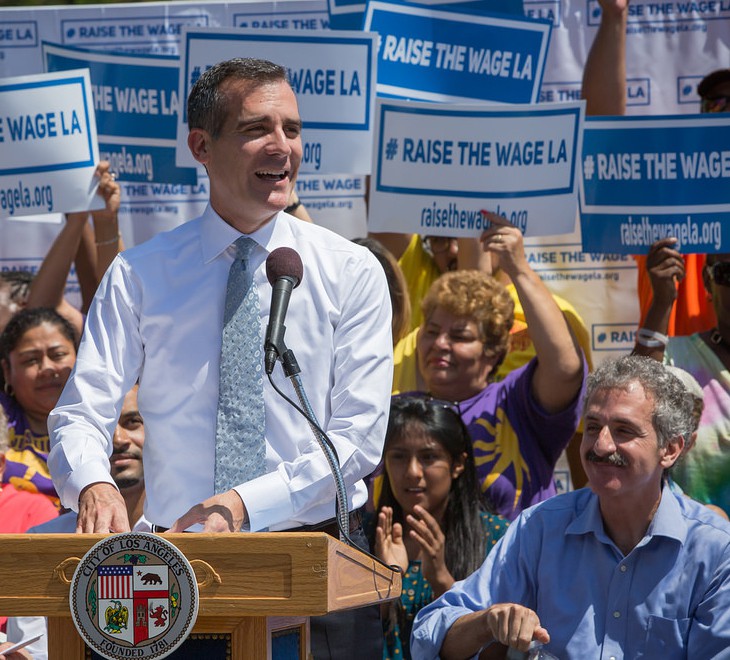Over a Million New Homes
Los Angeles does not have enough housing for all of its residents, especially families with average or below-average incomes. The city has up-zoned many neighborhoods, with another up-zoning now underway, to allow construction of over 1.5 million new housing units. Based on past experience, new housing may fall short of new zoning because new construction is often opposed and agonizingly slow.
Apartments that are regulated by Los Angeles’ rent stabilization ordinance make up over two-thirds of the city’s rental units, and 40 percent of its total 1.5 million housing units.
This strategy comes from a survey of landlords of rent-stabilized properties. Landlords were asked whether they would be interested in redeveloping their property with more units if it was financially feasible. Thirty-four percent of landlords said they were interested, 32 percent said they weren’t sure, and 34 percent said they were not interested. This means that between one-third and two-thirds of rent-stabilized landlords are interested in developing more apartments on their property.
As many as 1.4 million additional apartments could be built citywide on existing RSO apartment properties, based on the 1.9 billion unused square feet in building size permitted under current zoning.
Most rent-stabilized properties have two-story structures that are 50 to 100 years old. They were built in a day when land was cheaper and L.A. was smaller. These properties already provide below-market rent for many Los Angeles households, but there is an opportunity for them to make a bigger contribution.
The types of help landlords said they need to build more apartments on their property include low-interest loans, reduced relocation costs for rehousing tenants during new construction, lower permit fees, and faster permit processing.
Rent stabilized properties provide a promising large-scale opportunity to expand Los Angeles’ housing supply. However, under state law as well as the City’s rent stabilization policies, RSO properties that are redeveloped are subject to the following: 1) Compliance with any replacement unit provisions under specific funding or entitlement programs at prescribed affordability levels and 2) New buildings offered for rent within 5 years are subject to the RSO, unless the greater of (1) 20 percent of the new units or (2) the number of demolished RSO units, are replaced with units affordable to households with incomes that are no more than 80 percent of the area median income.
The best options are to build affordable housing and increase the amount of rent stabilized housing. This means that public subsidies will be required to preserve the contribution these properties already make to affordable housing after they are redeveloped to provide more housing. Both landlords and city tax payers will have to back this strategy.
Map: Unused Square Feet of Floor Area per RSO Parcel, City of Los Angeles
Challenges
This initial citywide analysis identifies RSO properties where current zoning allows larger structures, as well as neighborhoods where new development will have the least impact on the character of the community. This information can be helpful for avoiding community opposition arising from:
- Neighbors opposing perceived changes in the fabric of their neighborhood
- Historical preservation
- Renter advocates concerned about triggering gentrification and rising rents
- Affluent neighbors and property owners opposed to increased density
Opposition to individual projects is not generally based on the funding source, but rather who is going to live there and how big the building will be. Redevelopment of RSO properties to provide mixed-income housing in neighborhoods that are already predominantly multi-story rental housing may be a strategy that minimizes community opposition.
Rent stabilized properties may be the most promising large-scale opportunity to expand Los Angeles’ housing supply, however there are multiple challenges to redeveloping these properties. City policies to facilitate redevelopment will be required to achieve large-scale increases in the housing inventory through this strategy. These are five of the challenges:
- Landlord vs. developer: Los Angeles is a complex and closely regulated urban setting. Obtaining approvals for new construction and carrying projects through to completion requires a different skill set than being a landlord. Necessary skills include understanding of the economy, the real estate market, the planning process, building construction, and finance. Many landlords, particularly landlords with smaller property holdings, may lack these skills as well as the resources to complete the steps necessary to get through the planning process.
- Small parcels: Minimum lot size per dwelling is a major constraint that precludes increasing the number of units on many small parcels. Professor Anthony Orlando, an applied microeconomist who focuses on real estate, finance, and public policy, analyzed a small sample of RSO properties and found that minimum lot area requirements under current zoning would preclude development on most parcels smaller than 10,000 square feet. Possible solutions are to change zoning to reduce the minimum lot size required per unit or to consolidate properties. Property consolidation by public agencies would increase the cost of redevelopment.
- Relocating tenants while new construction is underway: Tenants would have to be relocated while their old apartment was being demolished and the site redeveloped. Some tenants would want the right to return to the property after redevelopment. Relocation is expensive and difficult, including finding temporary or permanent relocation sites adequately close to jobs and schools.
- Public subsidies: New development that includes affordable units as well as tenant relocation may require public subsidies. The availability of public funds will depend on the will of voters, as well as city priorities for how available funds should be used.
- Housing Department approval: Under current city regulations and state Ellis Act rules, if RSO units are removed, all rental units built on the site are subject to the RSO. This does not apply if the new units are not offered for rent for at least five years after the removal of the old units from the rental housing market. Landlords can seek an exemption from the Los Angeles Housing Department’s requirement if they (1) increase the number of RSO units on the property or (2) make 20 percent of the new units affordable, whichever number of units is greater. Housing is affordable if rent and utilities cost no more than 30 percent of the monthly household income for families and individuals with incomes of 80 percent or less than the area median income. Otherwise, all of the units are subject to the RSO.
PRESS COVERAGE
New report outlines possible solutions to more housing in Los Angeles
By Charlene Muhammad, The Final Call (September 27, 2022)














